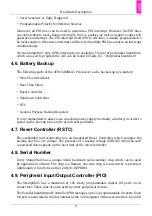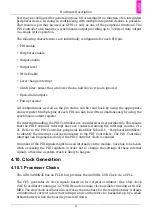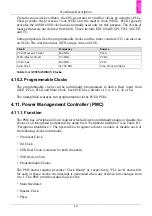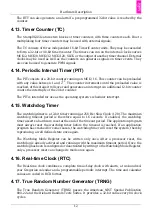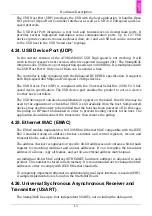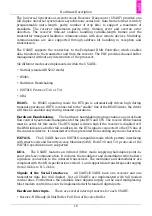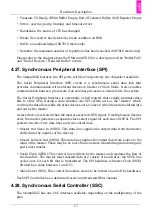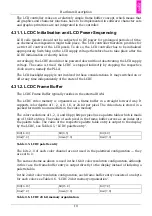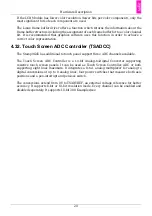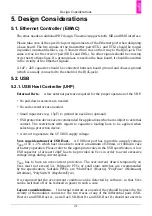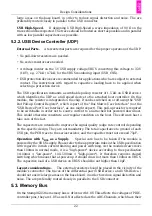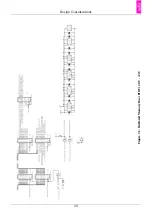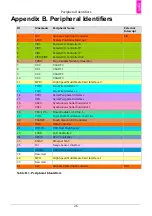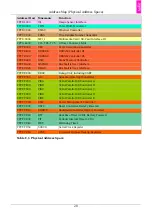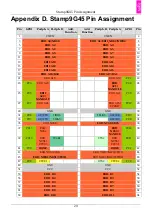
Hardware Description
15
The USB Host Port (UHP) interfaces the USB with the host application. It handles Open
HCI protocol (Open Host Controller Interface) as well as USB v2.0 Full-speed and Low-
speed protocols.
The USB Host Port integrates a root hub and transceivers on downstream ports. It
provides several high-speed half-duplex serial communication ports. Up to 127 USB
devices (printer, camera, mouse, keyboard, disk, etc.) and an USB hub can be connected
to the USB host in the USB "tiered star" topology.
4.24. USB Device Port (UDP)
In the current revision of the AT91SAM9G45 USB High speed is not working. It will
work in the processor's next revision, which is expected in august 2011. The Stamp9G45
integrates one USB device port supporting speeds up to 480 MBit/s. It is multiplexed with
the USB Host Port B. Only one of them can be used at a time.
The controller is fully compliant with the Enhanced HCI(EHCI) specification. It supports
both High-speed 480 Mbps and Full-speed 12 Mbps devices.
The USB Device Port (UDP) is compliant with the Universal Serial Bus (USB) V2.0 full-
speed device specification. The USB device port enables the product to act as a device
to other host controllers.
The USB device port can also be implemented to power on the board. One I/O line may be
used by the application to check that VBUS is still available from the host. Self-powered
devices may use this entry to be notified that the host has been powered off. In this case,
the pullup on DP must be disabled in order to prevent feeding current to the host. The
application should disconnect the transceiver, then remove the pullup.
4.25. Ethernet MAC (EMAC)
The EMAC module implements a 10/100 MBit/s Ethernet MAC compatible with the IEEE
802.3 standard using an address checker, statistics and control registers, receive and
transmit blocks, and a DMA interface.
The address checker recognizes four specific 48-bit addresses and contains a 64-bit hash
register for matching multicast and unicast addresses. It can recognize the broadcast
address of all ones, copy all frames, and act on an external address match signal.
An individual 48-bit MAC address (ETHERNET hardware address) is allocated to each
product. This number is stored in flash memory. It is recommended not to change the MAC
address in order to comply with IEEE Ethernet standards.
To completely implement ethernet an additional physical layer interface is needed (PHY).
A sample implementation is found on the Starterkit Board.
4.26. Universal Sychronous Asynchronous Receiver and
Transmitter (USART)
The Stamp9G45 has up to four independent USARTs, not including the debug unit.








